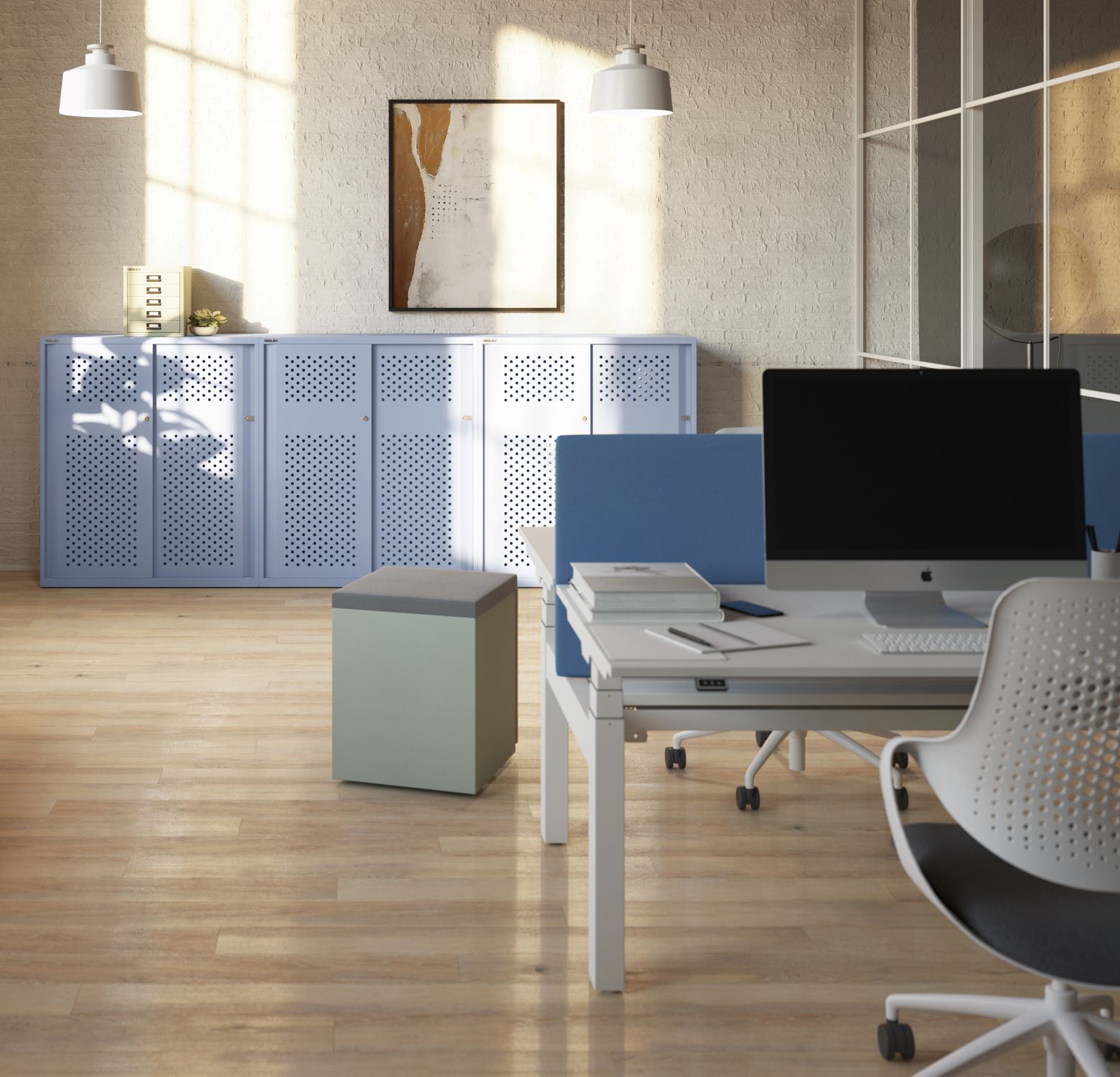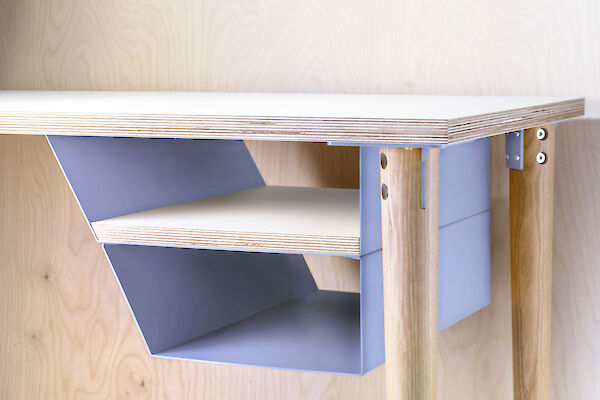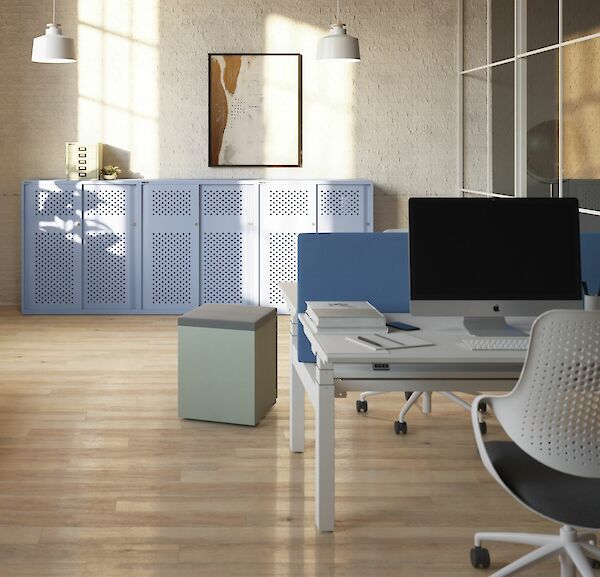
Many businesses, offices, and workspaces look very different to how they did three years ago. With hybrid working becoming increasingly commonplace for many industries, and office spaces being consistently redesigned to accommodate reduced floorplates or flexible working arrangements, clever use of space has never been a more central topic.
But what role does colour have to play? And how can it be used – as well as enhancing productivity or encouraging collaboration – to really add the element of ‘home from home’ to an office or workspace?

Understanding the meaning of colour
Before we look at how to use colour to create a sense of home at work, it’s important to understand the meaning of colour itself – and just how impactful it can be on people’s thoughts, feelings, and behaviours.
Some colour connotations – like a bright, sunny yellow for warmth and communication, or a dark navy for contemplation or a peaceful atmosphere – probably occur to us without too much thought. When we’re decorating our homes, for example, there’s usually a spectrum of colours that we’d look at and pick from, and we tend not to deviate too much from that. A bright pink kitchen, a fire-engine red bathroom or a black living room, for example, would certainly stand out from the norm. There are certain colours we associate with certain environments and expect to see there. That's why, if you’re looking to sell your home, the advice from estate agents tends to be consistent: remove any bold or controversial colour choices and make things neutral.
But why is that? What conscious or subconscious connection do we make with colour that drives us to gravitate towards (or avoid) certain shades without even realising?
How does colour affect us?
Colour is a visual experience that affects the brain. Being surrounded by different colours and shades can affect people’s mood, can be used to signal action, and can even trigger different physiological responses – and it’s something we’re usually completely unaware of.
It’s not surprising, then, that ‘colour psychology’ has become big business in the world of work and office design. If colour can be used to influence productivity, make colleagues feel more relaxed and able to focus, or to create a buzz and encourage collaboration, it makes sense to use it cleverly in the workspace, too.
Bringing home to work through colour
For lots of people, when the pandemic hit and working from home became a reality, creating a space that was fit for them to work in was critical to feeling productive and ready to do their job. There was a sense of bringing ‘the office’ into the home, in recognition of the fact that a combination of the elements that you’d typically find in both environments could create an optimal workspace.
But how does it work the other way round - if we want to bring some ‘home’ to work, and recreate that balance? Well, colour can be a good place to start.
Think about the colours that we use in our homes. Although everyone has individual taste and style differences, there are some commonalities. Neutral shades with accents of colour in open spaces, warm spectrum colours that feel inviting when bathed in natural light, and darker shades for places we want to feel more relaxed, are all things you’d find in most peoples’ homes.
The same principle applies to the workplace. While your brand colours might be zany pink or off-the-wall turquoise, if you plaster them all over your office walls, your team are unlikely to truly feel ‘at home’, because they’re not colours that you typically see or encounter in your home environment.
So, if your brand colours are a bit out-there, think about using secondary colours from your palette for the big, immovable things (like the walls, carpet, and most furniture) and save any bold primary colours for feature walls, prints or accents. That way, you’ll keep some personality, without unintentionally setting people on edge.

Another great way to use colour to bring in a sense of ‘home’ to the office is to combine it with texture. Again, traditional office environments tend to be very sterile – with long desks, lots of sharp corners and edges, and mostly functional items on the walls and bookshelves.
To make it feel more like home, why not break that mould?
Introduce textures – things like cushions, rugs, or even curtains – in colours that feel familiar to the home environment. Create zones or areas filled with tactile objects or things that distract or intrigue the eye, like plants, wall art, or even sculptures. Using colour and combining it with objects of beauty or interest, rather than filling your space with functional items, can be an effective way of creating a homely environment.
Why do it?
Now, more than ever, it’s important for businesses to think about how they can maintain a sustainable approach to hybrid working. And, by making the office feel more like home, you’re likely to encourage colleagues to spend time there.
According to our Creative Director, Jeanine Goddard, bringing the home into the office not only makes sense, but it’s something employers will have to consider more and more as our working lives change and adapt.
“It’s more important than ever for businesses to create an attractive workspace, that people actively want to spend time in.” she says.
“By bringing in elements of home, and features that people relate to and feel comfortable around, they’ll feel more connected with the space, and, ultimately, be happier to come back and work there.”